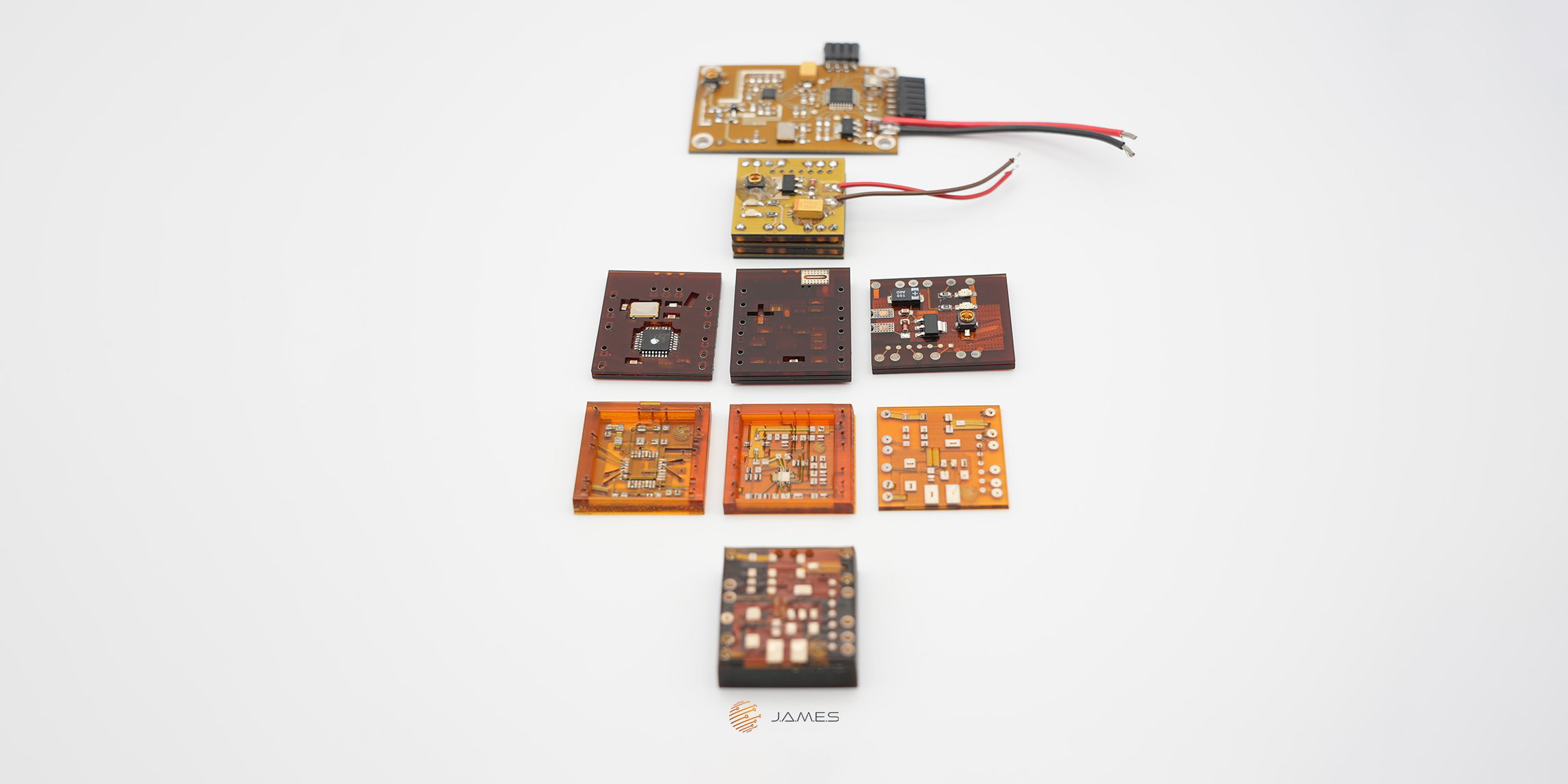RF Synthesizer - 3D Heterogeneous Integration

The goal of this AME story is to develop a guideline towards a highly integrated electrified volume of arbitrary shape. It is intended to leave the flat PCB formfactor behind and fit the desired electronic functionality in any suitable volume.
The RF synthesizer presented in this story will be the exemplary vehicle on which different approaches and ideas will be tested, demonstrated and verified. It is designed to transmit a fixed and stabilized signal on a predefined frequency, which can be distributed or amplified.
The RF synthesizer is very well suited as an example for 3D Heteregeneous Integration because it includes not only DC and digital signals, but also RF signals need to be handled. Therefore, there is a lot of potential for improvements with the AME technology.
3D Model Preview
Mission - Miniaturization, Rf Performance and Signal Integrity
With the ability to make 3dimensional formfactors functional for electronic applications the perspectives of AME is really high to keep the expected signal quality of RF and high data rate digital signals.
By using 3D Heterogeneous Integration methodolgy and full 3D wiring the distribution of critical signals can be established in a new way which can drive higher level of electrical performance and miniaturization.
RF on Ame Interfaces
J.A.M.E.S can give support for different styles of integrated RF interface designs
Key Features
3D-Heterogeneous Integration Insides
Animation - Realization of an Rf Synthesizer With 3d-Heterogeneous Integration Concept
The Advantages of AME
Using the AME technology to transport or distribute RF signals has the advantage that the lines can be drawn very smoothly in the sense that there will be no hard 90° angles like with vias in the traditional PCB technology. Within the AME technology it is possible to smoothly transport the RF signal through coaxial lines with a predefined bending radius which minimizes any reflections throughout the signal paths. Furthermore, the shielding of the coaxial lines leads to the possibility to highly increase the packing density of the lines, since unwanted crosstalk is completely prevented.
In the traditional PCB technology external COTS components needed to be populated either on the top or bottom layer of the board. With the AME technology, this is no longer necessary. While passive components, like coils and capacitors can directly be printed and included in the inside of the AME structure, non-printable COTS components, like chips or resistors, can still be embedded into the AME structure. So, the need to place all components on the surface of the structure is no longer valid, giving rise to additional miniaturization steps.
If completely embedding active components, the question for heat dissipation concepts will also have to be discussed. But also in this field, the AME technology has solutions to offer. For instance, the conductive material can be used to print customized heat sinks to cool critical components. Alternatively, also embedding external cooling structures like heat pipes may be an option to tackle this issue.
List of Requirements and Targeted Architecture
Related Articles

J.A.M.E.S Partners With APES Forge Strategic Partnership To Boost AME Innovation















